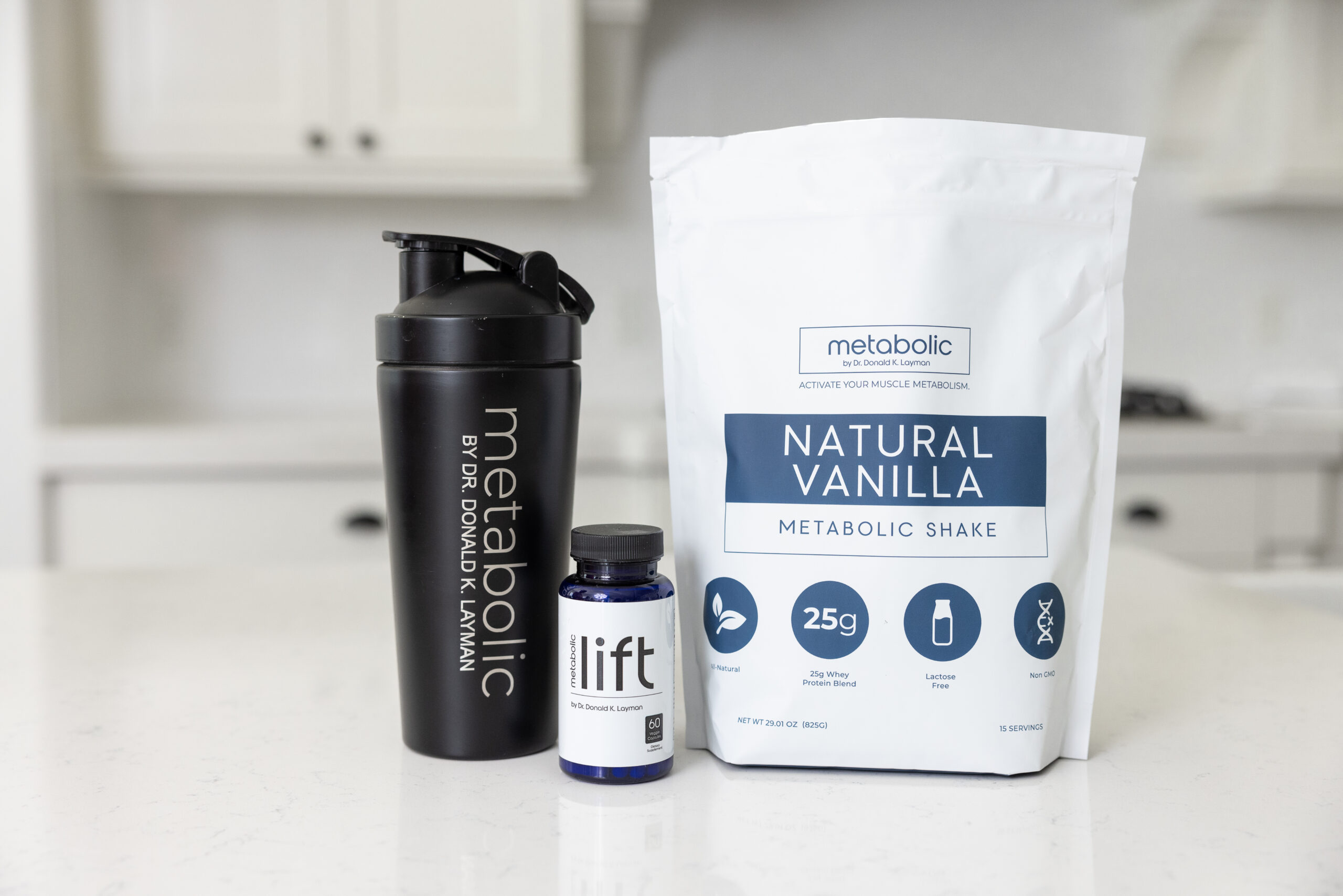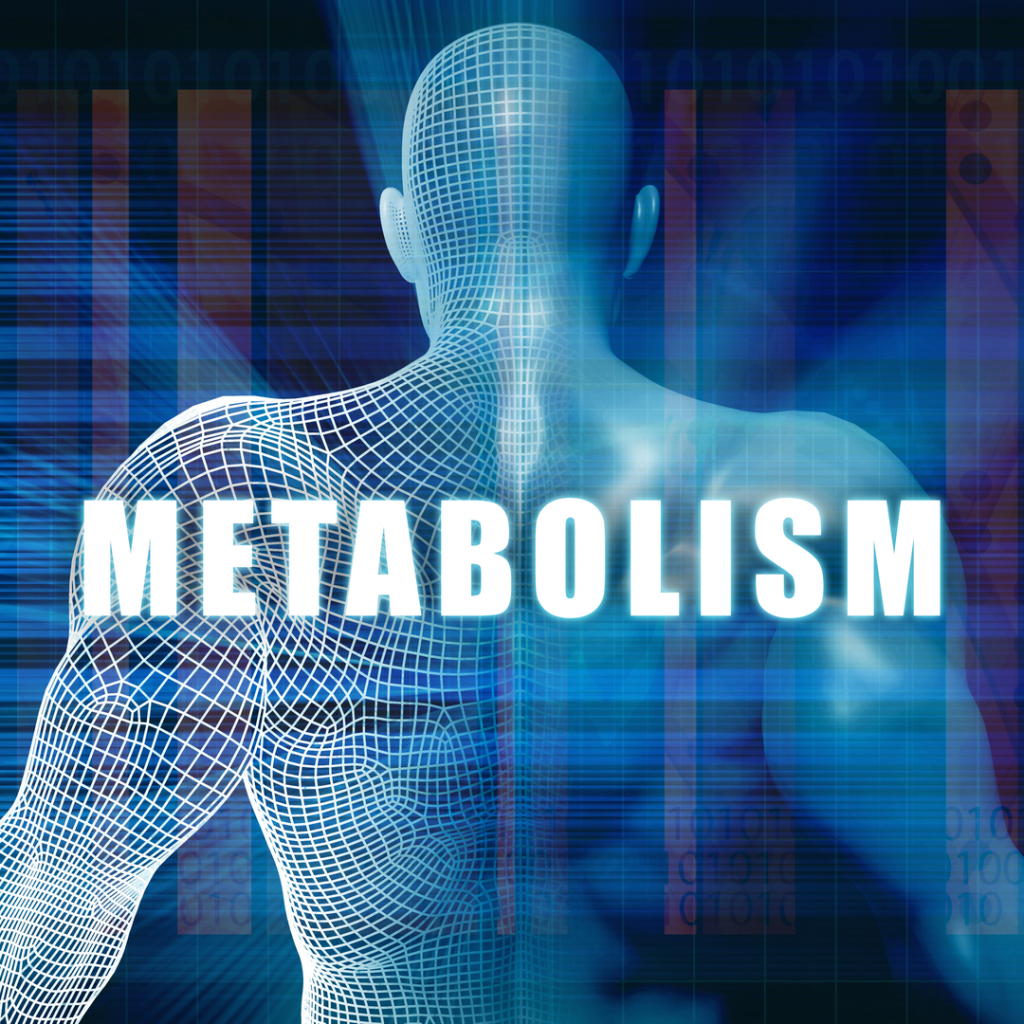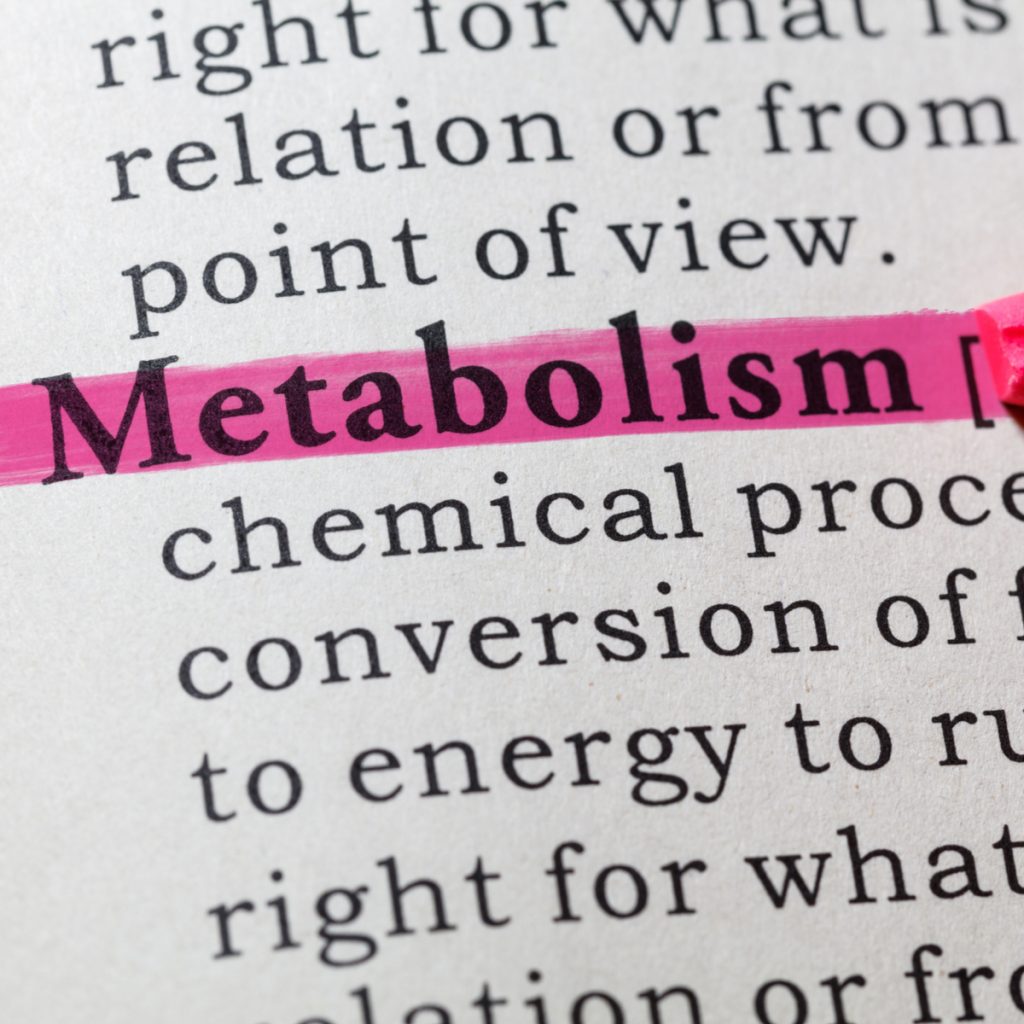Dr. Layman’s Expert Secrets On How To Have A Faster Metabolism At Any Age
Are you tired of battling the frustrating sluggishness of your metabolism as the years go by? Don’t worry, you’re not alone. Many of us have experienced the effects of slow metabolism firsthand.
But here’s the exciting part: There’s hope! By diving into the science behind the metabolic puzzle, we can uncover the underlying causes and unlock the secrets to reigniting our metabolic fire at any age.
Dr. Don Layman, a renowned expert in human nutrition and metabolic function, has dedicated years of research to understanding how to combat the natural effects of aging and slowing metabolism. His groundbreaking discoveries have shed light on effective strategies to tackle this issue head-on.
We’ll delve into some of the most recent and fascinating discoveries about muscle metabolism and why it slows down as we age. But that’s not all. There is hope because believe it or not, your metabolism is largely in your control!
We’ll go beyond theory and equip you with proven strategies to conquer the challenges and causes to help you overcome a slow metabolism. Get ready to embark on a journey of transformation and discover how you can revitalize your body and reclaim the energy and vitality you deserve.
So, hold on tight, because by the end of this article, you’ll be armed with the knowledge and tools to conquer the mystery of a slowing metabolism once and for all!
Boost Your Metabolism at Any Age: Unmasking the Metabolic Mystery
As we journey through life and inevitably age, our metabolism will begin to take a leisurely stroll instead of sprinting as it once did. The slowdown can be attributed to several factors.
One of the most significant, but least focused on contributors is the loss of lean muscle mass, known to scientists as sarcopenia. Research confirms that starting in our late 30s, we begin to experience a natural decline in muscle mass that can decrease our metabolic rate by as much as 5% for each subsequent decade (1).
An individual who is weight stable in their 20’s consuming 2100 calories each day may find they will gain weight consuming only 1700 calories per day in their 60’s and less than 1600 calories in their 70’s. In simple terms, our bodies burn fewer calories at rest as we age.
The Caloric Conundrum: Sedentary Lifestyle and Aging
Not only does loss of muscle impact metabolism, the activity of our muscles directly impacts metabolism and our lifestyle choices play a pivotal role.
If your job keeps you at a desk all day; if you find you have less time for your planned exercise; or if you’ve embraced a more relaxed lifestyle after turning 40, your calorie requirements may have taken a significant plunge compared to your energetic 20’s and 30s.
According to research published in the Journal of the American Geriatrics Society, a sedentary lifestyle can lead to a decline of over 100 calories per day in energy expenditure (3).
Activity can take many forms. It can be in the form of planned exercise such as going to the gym or in the form of activities of daily living (we call NEAT) for non-exercise activity thermogenesis.
Over time, gradual reduction in muscle activity, both planned exercise and NEAT, reduce daily calorie needs leading to unwanted weight gain if our eating habits remain unchanged.
Protein Turnover: A Key to Your Metabolic Health
A final component of muscle metabolic activity is a process called Protein Turnover. Protein turnover in humans is the process by which the cells in our body constantly break down (degrade) and recreate (synthesize) proteins. Think of it as a recycling program for your body’s proteins.
Most people are surprised to learn that a 60-year-old must build the same amount of new muscle protein each day as a 16-year-old.
This new muscle represents a process called Protein Turnover and reflects the constant need for repair and replacement of existing proteins throughout our bodies. Muscle protein accounts for nearly 50% of all body proteins, and protein turnover in muscle can account for 15% to 20% of daily calorie expenditure.
Unfortunately, this process becomes less efficient and slows with aging which is why our muscles become weaker and recovery from falls and sprints takes longer as we age. In total, muscle mass, physical activity, and protein turnover are major contributors to metabolism, and we have the power to control the effects of aging on our muscles. Healthy muscles burn calories and they also help regulate blood sugar and blood lipids. Muscle is the most under-appreciated aspect of metabolic health.
Each of us can optimize our metabolism at any age, and improve our long-term health by focusing on what we call “muscle-centric” health. Focusing on maintaining healthy muscles (and no, not by just going to the gym) will keep them strong and active and even rejuvenates and reignites your body’s metabolic fire.
Combatting the Causes of a Slow Metabolism
The valuable insights provided by Dr. Layman, along with the validation from numerous other researchers, have given us a clearer understanding of the steps we can take to counteract the slowdown of our metabolism. Let’s briefly explore a few of these empowering solutions and reclaim control over our metabolic health.
Protein Powerhouse: Fueling Muscle Metabolism
Defying the effects of aging and preserving muscle vitality requires consistently consuming high-quality protein. By prioritizing quality protein intake in our daily diet, we equip our bodies with the essential nutrients to combat the natural aging process.
Dr. Layman’s research has shown that maintaining adequate protein levels can play a pivotal role in promoting muscle health and preventing age-related muscle loss. By incorporating quality sources of protein into our meals, especially the first meal of your day, we nourish our muscles, support essential repair and remodeling, and ensure their longevity.
It’s time to harness the power of daily protein intake as one of the major antidotes to counteract the impact of a slowing metabolism and promote healthy aging.
It is unfortunate the Recommended Dietary Allowance (RDA) for protein has been misunderstood and misrepresented. The RDA which is set at only 0.8 grams per kilogram body weight (0.36 g/pound) is defined as the “minimum amount of daily protein for a healthy, active young adult.” The RDA is not the optimum amount for adult health, but the minimum amount to prevent deficiencies.
Dr. Layman and other scientists now have demonstrated that adults require higher protein intakes to protect metabolism, combat muscle loss, and improve the regulation of blood sugar. Optimal intakes for metabolic health range from 1.2 – 1.8 grams of protein per kilogram of body weight per day (0.56 to 0.82 g/pound) to fuel your muscles with the essential amino acids required to optimize muscle function and metabolism (7).
To help you get the quality protein you need each day, Dr. Layman created Metabolic, a ground-breaking program, with products formulated to ensure you meet your daily protein requirements needed to maximize Protein Turnover. The Metabolic system is carefully formulated by Dr. Layman, based on his body of research, and will adequately fuel your muscle and enhance your metabolism.

Resistance Revolution: Igniting the Metabolic Fire
Pairing high-quality protein intake with resistance exercise creates a powerful alliance that supercharges your muscle metabolism. Resistance exercises, such as weightlifting or bodyweight exercises, stimulate the Protein Turnover necessary for essential muscle repair and remodeling and strength development to combat aging.
By engaging in regular resistance training, you can help combat the muscle loss associated with aging and revitalize your metabolism. Research published in the Journal of Applied Physiology demonstrated that resistance exercise stimulates muscle protein synthesis (the critical first step in Protein Turnover), leading to increased muscle mass and a higher metabolic rate (8).
Furthermore, a supporting study showed that older adults who engaged in resistance training experienced improvements in muscle strength, lean body mass, and metabolic rate (9). It’s like throwing logs into a dormant fire, rekindling the flames of metabolism.
Resistance exercise involves stretching the muscles against resistance. It might include going to a gym and lifting weights or participating in a yoga class but also can simply be using rubber bands at home, climbing stairs at work, or bodyweight exercises like squats and push-ups. Aim to incorporate resistance training at least two to three times per week, focusing on different muscle groups.
A workout should include a minimum of 2 sets with 8 to 10 repetitions for each muscle group. People often believe that resistance exercise requires lifting heavy weights, but new research shows repetition is as important as weight. Lifting a 5-pound weight 20 times is the same as lifting a 50-pound weight twice.
The Ultimate Metabolic Boost: Combining Protein and Resistance Exercise
Now that we understand the importance of both high-quality protein intake and resistance exercise, let’s bring them together to maximize the metabolic boost.
Dr. Layman’s laboratory made a most significant discovery that presents a promising strategy to counteract the effects of a slowing metabolism caused by aging.
His work has established that consuming 25-30 grams of high-quality protein at each meal is critical in obtaining the necessary amino acids to stimulate muscle Protein Turnover, which is vital for muscle repair and metabolic enhancement. By adopting the practice of simply starting each day with at least 30 grams of protein at breakfast, we can have remarkable effects on energizing muscles. Dr. Layman made this super easy and affordable with the introduction of his Metabolic Program, which comes with a complete Guide and prepared meal replacements.
Ideally, we want to distribute protein throughout the day with 25-30 grams of high protein at each meal. Include high-quality protein sources such as lean meats, poultry, fish, eggs, dairy products, legumes, nuts, and seeds in each meal. This approach provides our bodies with the essential building blocks to support muscle health and counteract the impact of a slwing metabolism.
His research group also showed the combined benefits of dietary protein and resistance exercise. Protein and exercise work together to produce way more metabolic benefits than the sum of the parts.
Consuming protein after resistance exercise leads to greater muscle Protein Turnover and muscle repair compared to consuming protein at other times of the day (10). Aim to consume approximately 20 grams of protein within 90 minutes after your resistance workouts to optimize muscle protein synthesis and support the metabolic benefits of exercise.
Your post-exercise protein may simply be your normal breakfast or lunch depending on when you like to do exercise, or it could be a supplemental meal on the days you go to the gym or meet with a trainer. If you are concerned about weight or would like to lose a few pounds, make your post-exercise protein one of your normal meals. If you would like to gain some additional muscle, add the post-exercise protein as a fourth protein meal.
Other Metabolism Boosting Secrets
While protein intake and resistance exercise are key components in combating a slow metabolism, other lifestyle factors can also influence your metabolic rate. Here are a few additional strategies to consider:
- Stay hydrated: Drinking enough water is essential for maintaining optimal metabolic function. Dehydration can temporarily slow down metabolism, so aim to drink adequate fluids throughout the day.
- Prioritize sleep: Lack of sleep can disrupt hormone balance and negatively impact metabolism. Aim for 7-8 hours of quality sleep each night to support overall health and metabolic function.
- Incorporate aerobic exercise: While resistance exercise is vital for muscle metabolism, incorporating aerobic exercise, such as walking, jogging, cycling, and swimming, can provide additional benefits. Aerobic exercise helps improve cardiovascular health, burns calories, and contributes to overall energy expenditure.
- Manage stress: Chronic stress can disrupt hormonal balance and impact metabolism. Engage in stress-reducing activities like meditation, yoga, or hobbies to promote overall well-being.
Your Metabolism, Your Choice: Take Control of the Natural Effects of Aging
To wrap it up, slow metabolism is a common concern as we age, but it doesn’t have to dictate our health and vitality. Understanding the causes of slow metabolism and implementing targeted strategies can help counteract its effects. Daily protein intake plays a crucial role in maintaining muscle mass and fueling metabolic processes. By consuming high-quality protein and engaging in regular resistance exercise, you can revitalize your metabolism, stimulate muscle growth, and enhance overall health.
Remember, the keyword phrase “slow metabolism” is closely tied to the decline in muscle mass, hormonal changes, sedentary lifestyle, and inadequate protein intake. Embrace the power of protein and resistance exercise to reignite your metabolic fire and embrace the journey of aging with vitality and strength. So, fuel your body with daily quality protein and unleash the potential of your metabolism!
Take Control of Your Metabolism
Sources:
- https://pubmed.ncbi.nlm.nih.gov/24162336/
- https://www.ncbi.nlm.nih.gov/pmc/articles/PMC8020896
- https://www.ncbi.nlm.nih.gov/pmc/articles/PMC5388457/
- https://www.nejm.org/doi/full/10.1056/nejm199503093321001
- https://www.ncbi.nlm.nih.gov/pmc/articles/PMC3381813/
- https://academic.oup.com/ajcn/article/101/6/1330S/4564493
- https://pubmed.ncbi.nlm.nih.gov/8563679/
- https://www.ncbi.nlm.nih.gov/pmc/articles/PMC2892859/
- https://jissn.biomedcentral.com/articles/10.1186/s12970-017-0177-8




